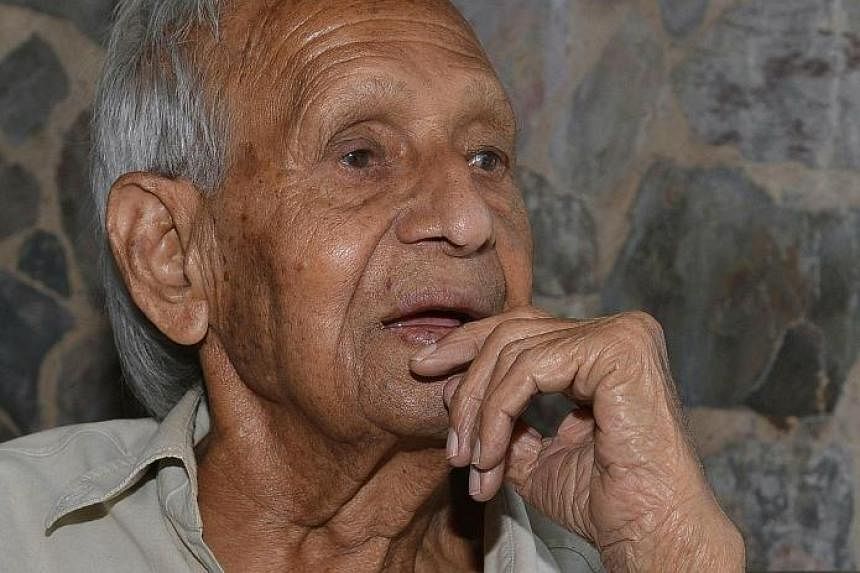New Delhi - Nek Chand (above), an Indian artist who rose to prominence by quietly building a sprawling kingdom of folk sculptures in northern India that became one of the country's most popular tourist destinations, died last Friday in Chandigarh, India. He was 90.
He died after a heart attack, his son Anuj Saini said.
His life's work, known as the Rock Garden of Chandigarh, covers several hectares and is populated by rock sculptures and figures of dancing women and animals, many of them fashioned from found objects such as the mudguards of motorcycles and broken bangles.
It stands in contrast to the striking if neglected government buildings conceived by Le Corbusier, who planned Chandigarh - the capital of the states of Punjab and Haryana - in the 1950s.
For some, the Rock Garden, which has thousands of visitors a day, is an antidote to what, with its stark modernist buildings, is seen as something of a bureaucrat's city.
"It has made Chandigarh complete," said Ms Rupan Deol Bajaj, a retired bureaucrat from Punjab who has been an advocate of protecting the garden. "It has given a soul to the city."
The creation story of the Rock Garden has the tenor of a local epic. Chand was born Nek Chand Saini in the village of Barian Kalan, which became part of Pakistan after partition. He arrived in Chandigarh just after India's independence in 1947. He worked for the government as a road inspector, according to the Department of Chandigarh Tourism website.
But, Ms Bajaj said, he became fascinated by found objects, including weather-beaten rocks. "I started building this garden as a hobby" in the 1950s, Chand said in an interview last December. "I had many ideas, I was thinking all the time. I saw beauty and art in what people said was junk."
By night, he slipped onto a patch of land and artfully arranged rocks and construction waste behind a barricade of empty tar drums.
"The beautiful stones he set aside, and then he would set them up like a jeweller," said Ms Bajaj, who was introduced to the sculptures in 1972 when, she said, the garden was still something of a secret. "When Nek Chand would pick them up and put them in a particular way, suddenly you could see this is a woman with a child."
The authorities learnt of his work soon after and a debate ensued over the future of the garden, Ms Bajaj said, but a groundswell of support led to its official opening to the public in 1976. Chand was given the paid position of director of the rock garden, which he held till his death.
Chand received many accolades, including a Padma Shri, one of India's highest civilian honours, and a handful of exhibitions across the world. He is survived by his wife and a daughter.
New York Times

